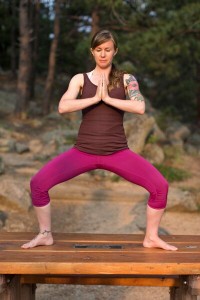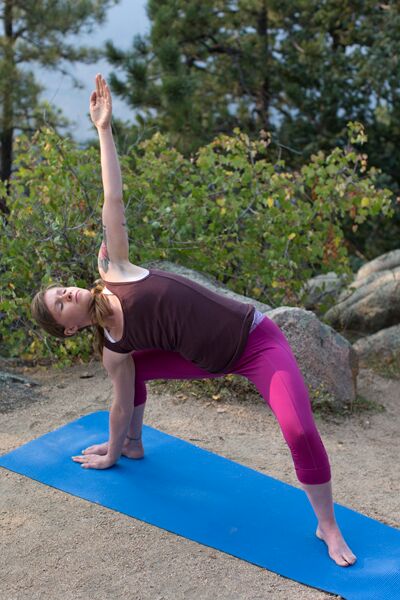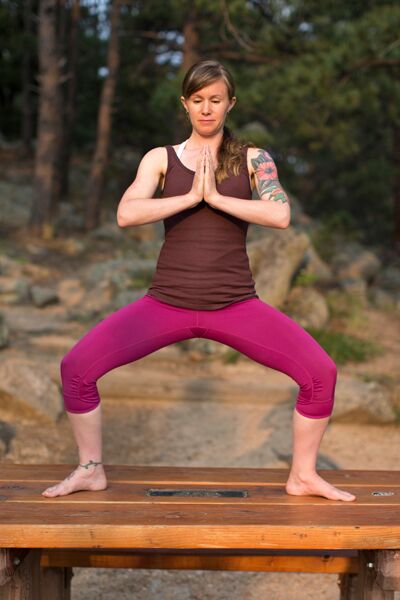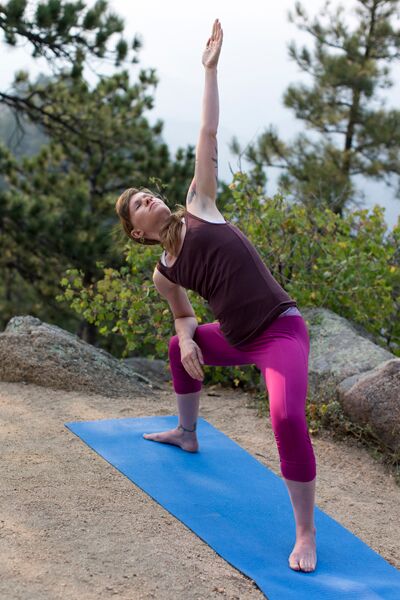 For this month of September, with Fall in the air, the Yoga focus of this month is the infamous Horse Stance. This static pose is not only extremely grounding as we come into this disrupted season of Vata, but also strengthening and warming as well. Performing this stance at the beginning of your practice will not only bring heat and flexibility to the body, but allow one to really find their foundation and center as they come into their practice.
For this month of September, with Fall in the air, the Yoga focus of this month is the infamous Horse Stance. This static pose is not only extremely grounding as we come into this disrupted season of Vata, but also strengthening and warming as well. Performing this stance at the beginning of your practice will not only bring heat and flexibility to the body, but allow one to really find their foundation and center as they come into their practice.
Horse stance has numerous benefits when practiced on a consistent basis, but the most important comes from its ability to teach you how to stand on your two feet. It may sound bazaar, but in any Yoga practice the first step has to be to learn how to really stand before you can move forward into the seated positions and inverted postures. In a classical Yoga practice the standing postures are taught first in order to open up the body for the various seated positions. The horse stance provides strength to the legs and openness of the hips, while also teaching one balance of the body, focus on the breath and control of the mind.
In the practice of Shadaw Yoga, I was taught this pose on day one with my teacher Madeleine Huish, and continued to practice it daily for over one year. In the beginning, I was barely able to hold the pose for even 30 seconds as my body got wobbly and my mind went restless. However, after even the first week I was surpassing one minute in this position as my body began to grow stronger and more receptive, and my mind learned the calmness it needed to stay comfortably in the posture. I eventually learned that the trick was not in the muscles holding you in the posture, rather to keep the four corners of the feet rooted, letting the bones and gravity hold you up. Once you are able to release the muscle in this posture, you can hold horse easily for 15 minutes, 20 minutes and beyond.
Although Yoga is a physical practice, the internal growth and healing it can bring is incomparable. Therefore it is a great compliment in any Ayurvedic regimen and can even be used to treat various doshic imbalances and seasonal fluctuations. The horse stance mainly reduces Vata due to its stable, static posture and warming qualities. It is considered an “earth” pose as it is incredibly grounding, strengthening and balancing by nature. It is a great pose to practice in the Fall and Winter, although I tend to practice it all year round.
Horse Stance
- Doshic Qualities:Vata ↓,Pitta ↓, Kapha ↑ (May increase Pitta in excess due to the heat factor)
- Best Season for Practice: Fall and early Winter
- Elemental Component: Earth element
- Main Areas of Strengthening in the Body: Legs, core and mind
Main Health Benefits
- Strengthens the core and leg muscles
- Teaches balance
- Sets a strong foundation for the entire practice
- Calms and controls the mind (although not always initially)
- Builds heat in the body
- Opens the ankles, knees and hips
- Increases confidence and energy levels
- Reduces Vata in the body and mind
Step-by-step Instructions
- This posture can be done at anytime of the practice, although I prefer to place it in the beginning as it is great for building the initial heat in the body and setting a balanced foundation.
- Spread the feet to about 3-4 feet apart.
- Point the feet out to a 45 degree angle.
- Inhale the arms up overhead and exhale them down as you bend the knees. Ideally the thighs will be almost parallel to the ground, but this takes much time and practice. To begin simply bend the knees down to a 45 degree angle, or to a comfortable height.
- From here check the alignment and make sure the feet are still out to a 45 degree angle and the knees are pointed out in the same direction as the feet.
- Tuck in the butt (mulabandha) and make sure the spine is straight up and not jetting forward or back.
- Make sure the weight is even in all four corners of the feet and no unnecessary tension is being held throughout the body.
- Once you have found proper alignment, place the hands at the heart center and close the eyes. To keep the mind at bay, it is typically helpful to either focus on a mantra or the breath; keeping it long, steady and even in both inhale and exhale.
- Stand here for 60 seconds to begin. When adding this to your daily routine, you can add on 30-60 seconds every week. Even after one week you will begin to find a bit more ease in the posture and your mind will begin to find some calmness. There may be shakiness at first, and this too will diminish in time.

Side Variation 2





Thank you very much for the nice explanation, regards from india